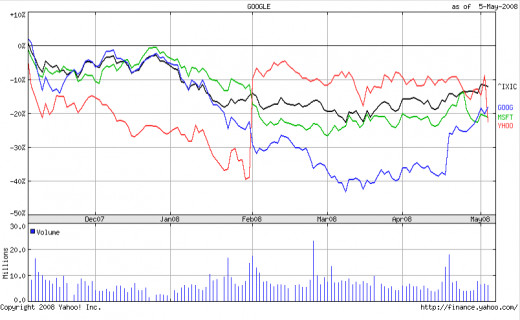Understand the different component factors in the interest rate paid by your investments
We all know that we invest our money to get a return. Whether than return comes as income or capital gains, the overall return is what matters.
But what drives the different returns you get on different assets? In this article I'll show the five main components of the return on an asset. This particular breakdown applies especially to fixed interest investments like bonds, but the principles apply to any kind of investment.

1. The risk free real rate of return
The risk free rate of return is the return any investor could get without taking any risks with their money. When we say "real" return we mean return net of the effect of inflation. This is important because inflation erodes the spending power of your money, so over time you can buy less stuff with the same amount of money.
In most developed countries the risk free rate of return (for long terms at least) are considered to be near enough equal to the yield on government bonds (such as gilts in the UK). This only works if there is very little risk of the government defaulting.
In reality there is no guarantee that an investor can get the risk free real rate of return.
The reason that (most of the time) the risk free rate of return is more than zero is because most of the time we prefer to have money now over money later so borrowers have to pay a positive return to persuade to invest our money instead of just spending it now. Although at the moment in many countries the risk free rate of return is zero or even negative at the moment, which makes investing an even greater challenge.

2. Expected inflation
The real risk free rate is net of inflation, but in the real world we invest in nominal terms, ie in cash terms. So the rate of return needs to include an allowance for inflation.
Unfortunately we don't know exactly what inflation will be, so all we can do is make the best estimate we can. Overall then, the rate of return on an asset (based on it's market price) contains the "market's expectation" of future inflation. This is something an "average" of all the investors in the markets ideas about future inflation.
Risk Premiums
If you take a risk on your investments you would expect to get a higher return for taking that risk. Otherwise you could just invest in an equivalent less risky asset. It can be helpful to think of these extra returns as a "risk premium" for the risk taken on.
3. Default-risk premium
When you invest your money there is always a risk that you won't get money back because whoever you invested with defaults. This might be losing everything, or might just be not getting back everything you were promised.
When investing you should expect to get a premium for this default risk. The greater the chance of default the bigger the premium.
Some investments come with credit ratings which give an idea of the default risk. These are given by credit rating agencies. However it is important to note that these ratings don't guarantee anything, they are just an informed opinion on the investment.

4. Liquidity risk premium
Liquidity is a measure of how easy it is to turn an investment into cash. This might be by selling it, or because the investment itself generates a lot of cash.
Investors generally prefer liquid investments as it is easier to manage your portfolio if the value of the investment can be realised quickly. Therefore investors would expect to get a premium for investing in illiquid assets.
The main reason an asset is illiquid is if there is not a very well developed market for the asset.
5. Maturity risk premium
The longer your money is tied up for the higher the return you might expect. Investing over a longer period increases the risks to your money - there is more time for things to go wrong. Longer maturity assets are also more affected by other changes such as changes in bank interest rates.
Summary
Component of interest rates
| Summary
|
|---|---|
Risk free real rate of return
| The rate of return that investors can achieve with no risk, net of the effect of inflation
|
Expected inflation
| The market expectation of future inflation
|
Default-risk premium
| Compensation for the risk that the investor might not get their money back
|
Liquidity premium
| Compensation if an investment is hard to sell
|
Maturity premium
| Compensation for locking your money away for a long time
|





